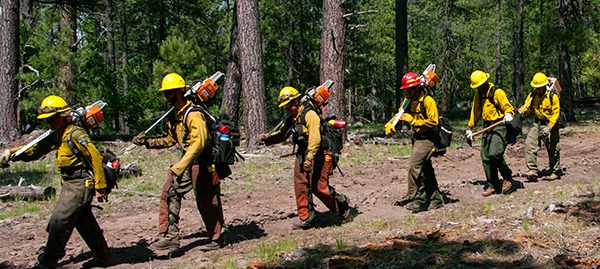Summer brings wildfires to the West and this summer is no exception. This got me thinking about emergency consultation.
Practitioners often have questions about emergency consultations because they usually occur under somewhat chaotic circumstances and don't follow the normal process that non-emergency consultations do. They're also rarely the same thing twice! I've boiled down emergency consultations to a couple of key thoughts, and here they are.
First, the initial contact between the responding agency and the Fish and Wildlife Service or National Marine Fishery Service is intended to inform the Services of the situation and give them an opportunity to provide broad simple suggestions for methods to consider during the response that could reduce effects to the listed species or critical habitat. Implementation of these suggestions is obviously at the discretion of the responding agency since human safety is the top priority. This also means the first contact is probably not the best environment for a practitioner to try and quickly train the agency in all the nuances and process of section 7 consultation!
Second, after the emergency is under control, the steps in the normal process start to come in to play. This usually begins by gathering information about the impacts to the listed species or critical habitat. Though it might seem a little odd, the emergency consultation (which is the only circumstance where “after-the-fact” consultation is allowed by section 7) is focused on the effects caused by the response – not the emergency (flood, wildfire, etc.) itself. That being said, it is helpful if the assessment includes the impacts from the emergency in a separate subsection. This information is useful because it can inform the overall condition (Status or Environmental Baseline) for species or critical habitat during future consultations.
Third, the consultation is eventually wrapped up with a largely typical consultation document. This could be either a Concurrence Letter for responses that resulted in may affect, but not likely to adversely affect determinations, or a Biological Opinion for responses that resulted in likely to adversely affect determinations. There is some confusion by many practitioners regarding whether a consultation is necessary for responses that result in a not likely to adversely affect determination. Some of that confusion stems from language in the 1998 Handbook (chapter 8) on emergency consultations. In spite of the Handbook’s language, a consultation is necessary because the may affect threshold has been met. There are no exceptions to this threshold for emergencies.
Finally, I think it is valuable for practitioners to learn how responses are carried out and the types of tools and techniques that are used. This knowledge creates better understanding about the scale and intensity of impacts and encourages peer-to-peer relationships with responding agencies. One of the best ways to do this is to observe responses firsthand, however this in-person experience must be cleared through the appropriate authorities so that the practitioner doesn’t become a hindrance to the response or become a new part of the emergency.
Related to that suggestion, responding agencies typically manage emergencies using the National Incident Management System and all wildfires use this model of management. The Federal Emergency Management Agency (FEMA) has excellent online courses on how that system operates: FEMA - Emergency Management Institute (EMI) Course IS-700.B: An Introduction to the National Incident Management System. I would encourage all practitioners to take advantage of that training. The introduction course is free and takes only a few hours to work through.

